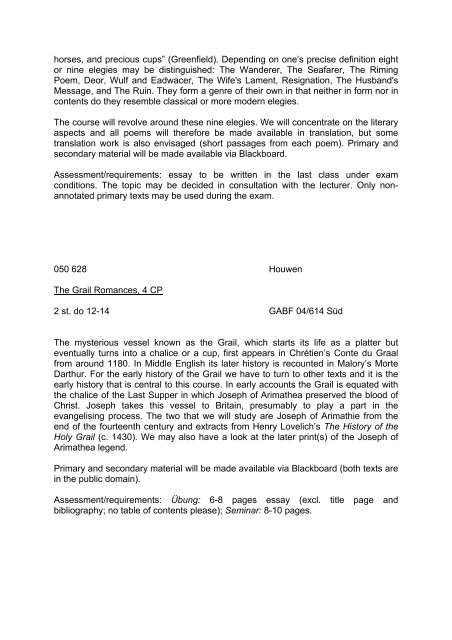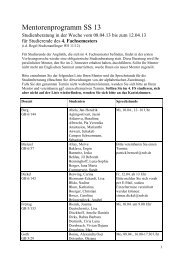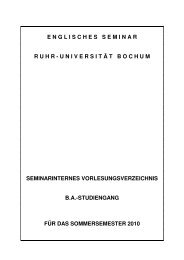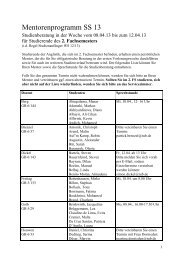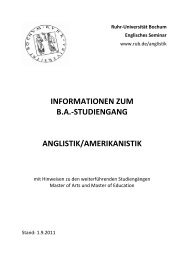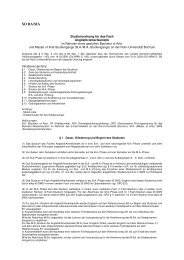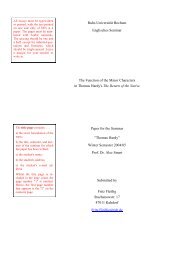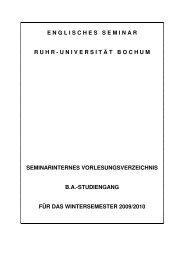gb - Englisches Seminar - Ruhr-Universität Bochum
gb - Englisches Seminar - Ruhr-Universität Bochum
gb - Englisches Seminar - Ruhr-Universität Bochum
Create successful ePaper yourself
Turn your PDF publications into a flip-book with our unique Google optimized e-Paper software.
horses, and precious cups” (Greenfield). Depending on one’s precise definition eight<br />
or nine elegies may be distinguished: The Wanderer, The Seafarer, The Riming<br />
Poem, Deor, Wulf and Eadwacer, The Wife's Lament, Resignation, The Husband's<br />
Message, and The Ruin. They form a genre of their own in that neither in form nor in<br />
contents do they resemble classical or more modern elegies.<br />
The course will revolve around these nine elegies. We will concentrate on the literary<br />
aspects and all poems will therefore be made available in translation, but some<br />
translation work is also envisaged (short passages from each poem). Primary and<br />
secondary material will be made available via Blackboard.<br />
Assessment/requirements: essay to be written in the last class under exam<br />
conditions. The topic may be decided in consultation with the lecturer. Only nonannotated<br />
primary texts may be used during the exam.<br />
050 628 Houwen<br />
The Grail Romances, 4 CP<br />
2 st. do 12-14 GABF 04/614 Süd<br />
The mysterious vessel known as the Grail, which starts its life as a platter but<br />
eventually turns into a chalice or a cup, first appears in Chrétien’s Conte du Graal<br />
from around 1180. In Middle English its later history is recounted in Malory’s Morte<br />
Darthur. For the early history of the Grail we have to turn to other texts and it is the<br />
early history that is central to this course. In early accounts the Grail is equated with<br />
the chalice of the Last Supper in which Joseph of Arimathea preserved the blood of<br />
Christ. Joseph takes this vessel to Britain, presumably to play a part in the<br />
evangelising process. The two that we will study are Joseph of Arimathie from the<br />
end of the fourteenth century and extracts from Henry Lovelich’s The History of the<br />
Holy Grail (c. 1430). We may also have a look at the later print(s) of the Joseph of<br />
Arimathea legend.<br />
Primary and secondary material will be made available via Blackboard (both texts are<br />
in the public domain).<br />
Assessment/requirements: Übung: 6-8 pages essay (excl. title page and<br />
bibliography; no table of contents please); <strong>Seminar</strong>: 8-10 pages.


